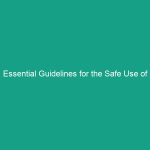Introduction
Good morning team! Today, we’re diving into an essential topic that affects all of us: Essential Safe Internet Usage Guidelines: Avoid These Critical Risks! In our increasingly digital workplace, understanding how to navigate the internet safely is crucial not just for individual protection, but for the security of our entire organization.
As we rely more on the internet for daily tasks, the risks associated with unsafe internet usage have grown. It’s vital that we all recognize these risks and take proactive steps to mitigate them. Let’s explore how we can use the internet safely while maintaining productivity and security.
Understanding Essential Safe Internet Usage Guidelines
So, what exactly do we mean by Essential Safe Internet Usage Guidelines? These are a set of practices and protocols designed to help employees navigate the internet safely while at work. They are crucial for minimizing the risks of Cyber Threats such as hacking, phishing, and malware attacks.
When employees understand and follow these guidelines, it significantly reduces the chances of compromising sensitive information, both personal and organizational. One common misconception is that Internet Safety is solely the IT department’s job; however, it is a shared responsibility that requires everyone’s participation.
Key Hazards, Risks, and Safety Considerations
Let’s identify some specific Hazards and risks associated with internet usage in the workplace:
- Phishing Attacks: Cybercriminals often send fraudulent emails or messages to trick you into revealing personal information.
- Malware: Downloading files or clicking links from untrusted sources can introduce harmful software to your devices.
- Data Breaches: Poor internet Safety practices can lead to unauthorized access to sensitive company data.
- Social Engineering: Attackers may manipulate employees into giving up confidential information through deceitful tactics.
Ignoring these risks can lead to severe consequences such as financial losses, legal repercussions, and damage to our company’s reputation. Are there any specific incidents you’ve encountered that illustrate these risks? Let’s discuss!
Best Practices, Procedures, & Actionable Advice
To protect ourselves and our organization, here are some essential Best Practices for safe internet usage:
1. Be Wary of Unknown Emails and Links
Always verify the sender’s email address and avoid clicking on links or downloading attachments from unknown sources. If you receive a suspicious email, report it to IT.
2. Use Strong, Unique Passwords
Create passwords that are at least 12 characters long, using a mix of letters, numbers, and symbols. Avoid using the same password across multiple sites. Consider using a password manager to keep track of your passwords securely.
3. Enable Two-Factor Authentication
Whenever possible, enable two-factor authentication (2FA) on your accounts. This adds an extra layer of security, making it harder for unauthorized users to gain access.
4. Keep Software Updated
Regularly update your operating system, applications, and antivirus software. Updates often contain security patches that protect against new threats.
5. Secure Your Network
Use a secure Wi-Fi connection, preferably a virtual private network (VPN) when accessing company resources remotely. Avoid using public Wi-Fi for sensitive transactions.
6. Educate Yourself and Others
Participate in Cybersecurity training sessions and stay informed about the latest threats and Safe Practices. Share knowledge with your colleagues to create a more secure workplace.
Real-World Example
Consider the case of a company that fell victim to a phishing attack due to an employee clicking on a malicious link in an email. This led to a data breach that compromised sensitive client information, resulting in significant financial and reputational damage. By following safe internet usage guidelines, such incidents can be avoided.
Regulations, Standards, and Compliance
It’s not just about being safe; compliance is also crucial. Regulations such as the Health Insurance Portability and Accountability Act (HIPAA) and the General Data Protection Regulation (GDPR) impose strict guidelines on how organizations must handle data. Compliance with these Regulations is critical to protect both the organization and its employees.
Non-compliance can result in hefty fines and legal challenges. Understanding and adhering to these regulations ensures that we are safeguarding our data and our clients’ information. How familiar are you with our company’s data protection policies?
Employee Engagement & Discussion
Now, let’s open the floor for discussion. What safety challenges have you encountered related to internet usage? Have you ever experienced a phishing attempt or a malware issue? Sharing these experiences can help us all learn and improve our internet safety practices.
Feel free to ask questions or share tips you’ve found helpful in your own internet usage. Your input is invaluable in creating a safer workplace for everyone!
Conclusion & Key Takeaways
In conclusion, understanding and implementing Essential Safe Internet Usage Guidelines is crucial for protecting ourselves and our organization from the myriad of risks associated with internet use. Remember the key takeaways:
- Be cautious with emails and links.
- Use strong, unique passwords and enable two-factor authentication.
- Keep your software up to date.
- Secure your network and educate yourself and others about internet safety.
Let’s prioritize safety and ensure that we are all doing our part to maintain a secure digital Environment. Thank you for your attention and your commitment to safety in our workplace!


